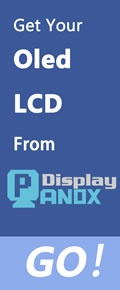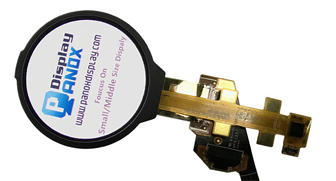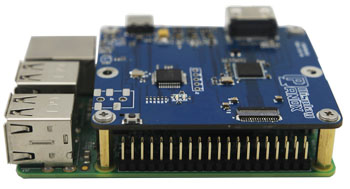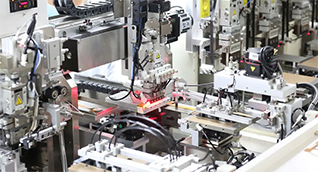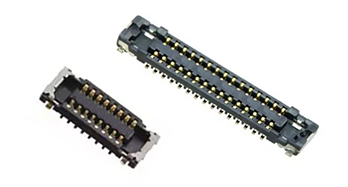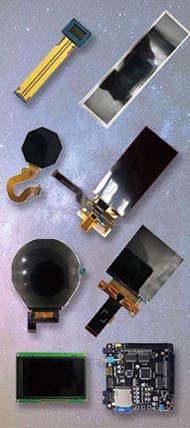OLED and LED are two popular display technologies used in devices and industrial applications. OLED uses organic compounds that emit light when electrified, enabling thin, flexible screens with better contrast and wider viewing angles. LED relies on backlighting with light-emitting diodes behind an LCD panel, offering bright, energy-efficient but usually bulkier displays. Also check: OLED
What Are the Fundamental Differences Between OLED and LED?
OLED (Organic Light Emitting Diode) displays emit light directly from organic materials when electric current flows through them, meaning each pixel produces its own light. LED (Light Emitting Diode) screens are LCDs that use LEDs as a backlight behind a liquid crystal panel.
The key distinctions involve:
-
Light source: OLED pixels are self-emissive, LED pixels depend on backlighting.
-
Thickness: OLED panels are thinner due to no backlight.
-
Color & contrast: OLEDs provide deeper blacks and better color accuracy.
-
Viewing angles: OLEDs maintain color integrity at wider angles.
-
Lifespan and cost: LED screens tend to last longer and cost less.
How Does OLED Technology Work Compared to LED?
OLEDs consist of thin organic layers sandwiched between an anode and cathode. When electrically charged, these layers emit light. This enables flexible and even transparent displays without separate backlight units.
LED screens use a backlit LCD where liquid crystals control light transmission from an LED panel behind them. The liquid crystals don’t emit light but modulate it to form the image. This requires a thicker assembly for the backlight and diffusers.
Which Display Is Better for Industrial and Commercial Applications?
OLED excels in industries demanding ultra-thin, lightweight, and high-contrast displays with rich colors, such as wearable tech, VR, and automotive dashboards. LED’s reliability, brightness, and lower cost favor applications like outdoor signage, factories, and budget-conscious commercial screens.
Factories and wholesalers in China, such as Panox Display, offer both to suit OEM needs:
-
OLED for premium, bespoke projects.
-
LED for large scale and cost-effective solutions.
Why Are OLED Displays More Expensive Than LED?
Costs stem from manufacturing complexity, organic material sensitivity, lower production yields, and shorter lifespan of OLEDs. The precision required for producing uniform organic layers and preventing burn-in raises prices.
LED manufacturing is more mature with cheaper, high-volume panel fabrication processes. While OLED prices are decreasing rapidly, factories like Panox Display still price OLED higher due to quality and customization.
How Can OEM Factories in China Meet Custom Display Needs?
Leading Chinese suppliers like Panox Display specialize in OLED and LCD/LED OEM with custom sizes, resolutions, touch integration, and color calibrations. They handle sourcing from top-tier brands (Samsung, LG, AUO) and provide added services such as controller boards and PCBs.
This flexibility helps global B2B clients, including startups, optimize MOQ and production costs while accessing cutting-edge technologies.
What Are the Energy Efficiency and Lifespan Differences Between OLED and LED?
OLEDs consume less power when displaying darker images due to pixel-level lighting, making them efficient in black-dominant UI. LEDs evenly backlight screens, which may use more power in darker scenes.
Lifespan-wise, LEDs generally last longer (up to 60,000 hours) compared to OLEDs (around 30,000 to 40,000 hours), owing to organic material degradation over time. This makes LEDs preferable where durability is critical.
| Feature | OLED | LED (LCD-Backlit) |
|---|---|---|
| Thickness | Ultra-thin, flexible | Thicker, backlight required |
| Contrast Ratio | Infinite black levels | Limited by backlighting |
| Viewing Angles | Wide, consistent colors | Narrower, color shifts occur |
| Power Usage | Efficient in dark mode | Consistent across content |
| Lifespan | 30K–40K hours | Up to 60K hours |
| Cost | Higher | Lower |
Where Are OLED and LED Technologies Headed in China’s Manufacturing Scene?
With the rise of smart devices and IoT, Chinese OLED and LED manufacturers focus on innovation, miniaturization, and cost reduction. Companies like Panox Display lead the way in adopting Micro-OLED, flexible OLED, and advanced TFT LCDs, enabling China to compete globally.
The rapid automation and MES integration in China’s factories also streamline mass production while enabling tailored solutions for both wholesale and OEM clients worldwide.
Does Panox Display Support OEM Customization for Both OLED and LED?
Yes, Panox Display offers extensive OEM customization services for both OLED and LED products, including custom screen sizes, interface boards, touch modules, and protective glass. Their automated production lines facilitate efficient manufacturing with quality assurance, suitable for various industries including military, automotive, and wearable electronics.
How Should Businesses Choose Between OLED and LED Displays from a Chinese Supplier?
When selecting a Chinese factory supplier like Panox Display, consider:
-
Application needs (contrast, flexibility, lifespan)
-
Budget constraints and volume requirements
-
Technical support and after-sales service
-
OEM capabilities and customization options
-
Lead times and compliance with quality certifications (ISO 9001)
Partnering with versatile suppliers who handle both OLED and LED ensures optimal product matching.
What Innovations Are Unique to OLED and LED Displays Made in China?
China leads in:
-
Flexible and circular OLEDs tailored for wearables
-
Industrial-grade LCD/LED panels for harsh environments
-
Integration with touch panels and controller boards at the factory level
-
Efficient mass production owing to automation
Panox Display exemplifies these innovations with a portfolio supporting both cutting-edge and cost-effective displays.
Panox Display Expert Views
"Panox Display stands at the forefront of China’s OLED and LED manufacturing landscape, leveraging state-of-the-art production technology and close partnerships with global panel makers. Our commitment to quality, customization, and competitive pricing makes us an ideal partner for OEMs worldwide, especially those seeking reliable yet flexible display solutions. As the market evolves, Panox will continue to innovate in flexible OLEDs and industrial LCD technologies, supporting diverse industries from VR to automotive with scalable, cutting-edge products." — Panox Display Senior Engineer
Conclusion
Understanding the difference between OLED and LED is essential for making informed decisions in display procurement, especially in B2B manufacturing contexts. OLED offers superior image quality, flexibility, and thinness at higher cost and shorter life. LED delivers durability, brightness, and affordability suitable for many industrial applications. China-based manufacturers like Panox Display bridge these options with OEM services, customization, and competitive pricing, empowering clients globally to select the best display technology to fit their unique product needs.
FAQs
What are the main advantages of OLED over LED?
OLED provides self-emitting pixels, deeper blacks, wider viewing angles, and thinner designs with flexible applications.
Can LED screens display the same color range as OLED?
LEDs have a more limited contrast and color range due to reliance on backlighting and less precise pixel control.
Is OLED suitable for outdoor use?
OLEDs can be used outdoors but typically have less brightness than LED-backlit screens, requiring enhancements for direct sunlight visibility.
How do Chinese manufacturers like Panox Display ensure display quality?
Through certified supply chains, automated production lines, strict quality controls, and extensive OEM customization options.
Are OLED and LED display prices expected to change?
OLED prices are decreasing due to improved manufacturing, while LED prices remain stable but competitive, balancing cost-performance choices.









